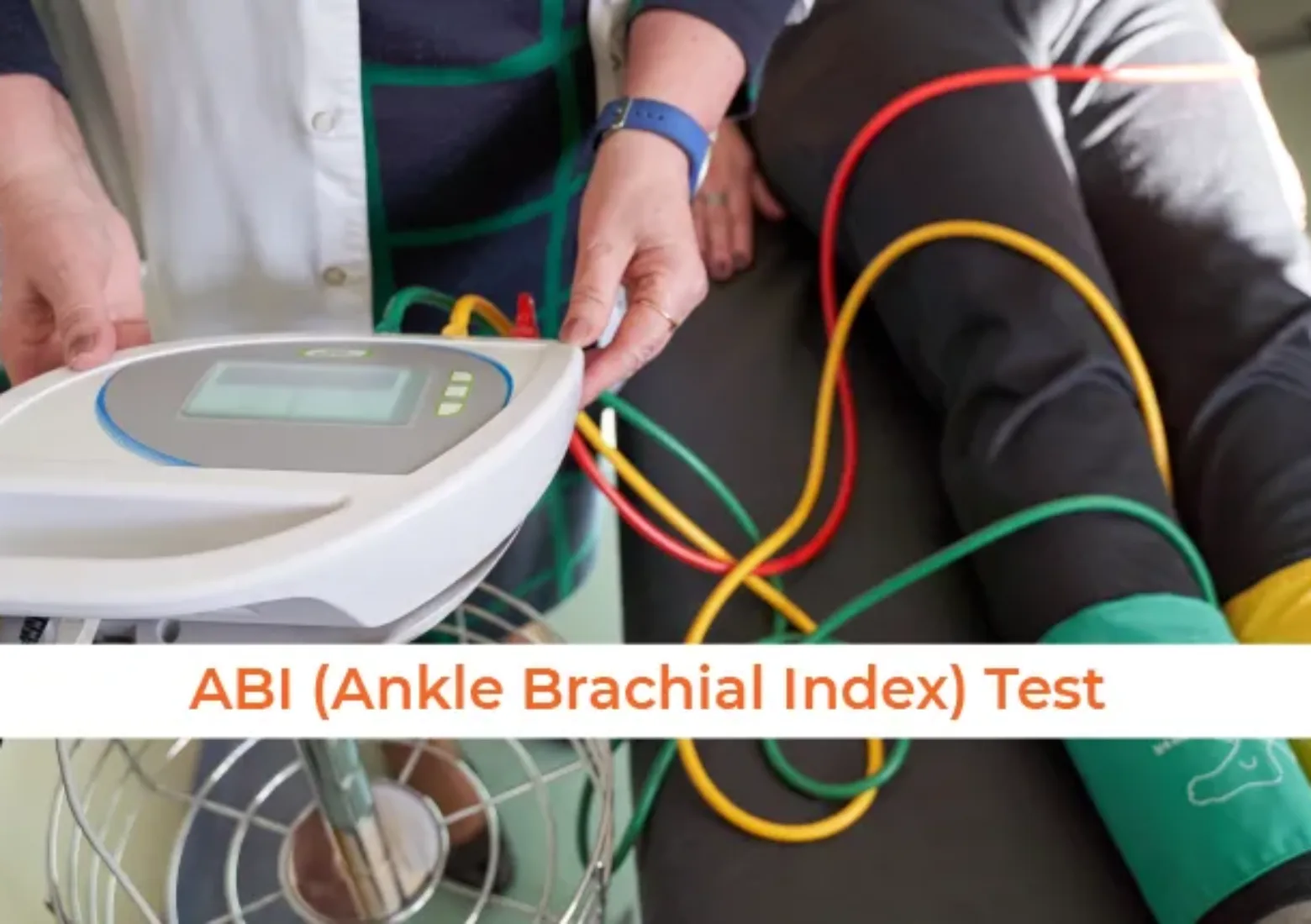What is an ABI (Ankle Brachial Index) Test?
April 4 • 2022

Have you ever experienced circulatory issues? Or maybe you’re wondering what that even means.
In generally healthy people, blood flows to and from their legs and feet without any issues. But in people who have circulatory problems, their arteries start to narrow, therefore reducing the blood flow to a patient’s limbs — this is also known as PAD (Peripheral Arterial Disease).
But how would I know if this is happening, you ask? Typically, patients with PAD may experience symptoms like muscle cramps or pain when walking, and/or numbness, weakness, or even coldness in their legs. Is this you? If so, you might want to consider an ABI (Ankle Brachial Index) noninvasive test.
What is an Ankle Brachial Index test?
An Ankle Brachial Index, also known as ABI, test is a quick and inexpensive screening your primary care doctor can do to measure the blood flow to your legs and feet. By checking your blood pressure in multiple areas of your body, an ABI test is able to highlight any potential problems, such as blockages in blood flow to your limbs and how severe your PAD is. This screening allows us to identify high-risk patients to help prevent future cardiovascular and cerebrovascular events.
Who qualifies for an ABI test?
Patients who are experiencing PAD symptoms, such as the ones listed above, should speak with their primary care doctor immediately. However, it’s important to know that not all leg pains are associated with PAD. So, how do you distinguish PAD from other leg pain?
If you’re experiencing these symptoms (muscle cramps or pain when walking, or numbness, weakness, or coldness in your legs) after a short distance or time and resting does not relieve the symptoms, it’s time to consider an ABI test. If left untreated, symptoms may get worse and could increase your risk of losing a limb.
Risk factors to consider:
Not everyone qualifies for an ABI test. However, patients with certain risk factors for PAD may benefit from this screening. High-risk factors for PAD include:
▪ patients who are diabetic or older than the age of 50
▪ patients with high blood pressure
▪ patients with high cholesterol
▪ patients with a family history of heart disease
▪ patients who either smoke, have a history of smoking, or use tobacco products
▪ patients who have atherosclerosis (narrowing of the arteries causing a buildup of plaque
How is the ABI test administered?
Your primary care provider will have you lie down for a few minutes before they perform the test so your arms and ankles can be at heart level during the screening. A nurse or medical assistant will then take your blood pressure using an inflatable cuff on both your arms and ankles, while also using an ultrasound device, called a doppler, to listen to the blood flow in your arteries.
Your primary care team will place the blood pressure cuff on one arm, then rub a small amount of gel right above your brachial artery. As the blood pressure cuff inflates and deflates, your medical team will use the doppler to listen to your pulse and record the measurement. This same process is repeated for both arms, as well as your ankles. After your primary care team has completed the screening, the numbers will be used to determine the Ankle Brachial Index for each leg.
The great news about this test is that it’s quick and easy – taking 10 to 20 minutes max and is completely painless.

How to prepare for the ABI test:
Before your ABI test, do not:
▪ exercise within an hour before getting your test
▪ smoke, use any tobacco products or consume alcohol one hour before the test
Patients may be more comfortable wearing loose-fitting clothing and emptying their bladder before the test begins.
What is a normal and abnormal ABI reading?
After your primary care team takes your blood pressure and determines the ABI calculation, they will give you a number that ranges from less than 1 to higher than 1.
A normal ABI is between 0.9 and 1.4. An abnormal ABI is 1.0 and below or above 1.4. Below are the ABI ratios:
▪ Normal: between 0.9 and 1.4
▪ Mild to Moderate PAD: between 0.4 and 0.9
▪ Severe PAD: 0.4 or less
▪ Abnormal vessel hardening from PAD: higher than 1.4
What does a low and high ABI mean?
If a patient’s ABI is 0.9 and below, the patient is diagnosed with PAD. This means the patient is at high-risk for heart attack or stroke, kidney disease, and/or high blood pressure.
If a patient’s ABI is 1.4 or higher, this means the blood vessels in the patient’s limbs are hardening because of age or diabetes.
What does this mean for those who are diagnosed with PAD?
If a patient is diagnosed with PAD, they will need to schedule regular appointments with their primary care provider. They may also need to repeat the ABI test from time to time to determine if their PAD is getting better or worsening. It will also determine the plan of action that is needed to help treat the patient and help open their blood vessels and make sure they are working properly.
Getting an ABI (Ankle Brachial Index) test done is a quick and easy way to know if you have PAD (Peripheral Artery Disease). This test is painless, noninvasive, and can be done at your primary care office. It is the preferred way to screen high-risk patients, and if diagnosed with PAD, can help save your life by catching it early.
So, if you or someone you know thinks you may be at risk for PAD, an ABI test may be right for you. To see if you qualify, call (770) 268-4011 or book an appointment online with one of our Aylo Health providers.